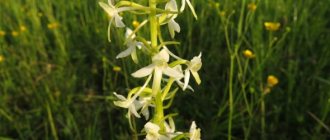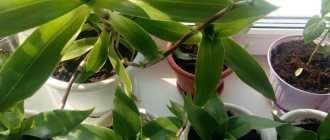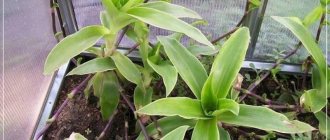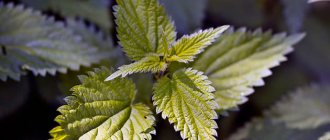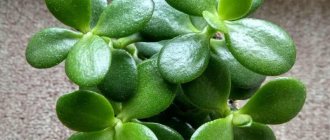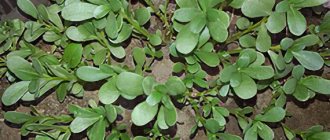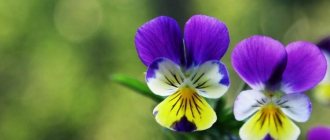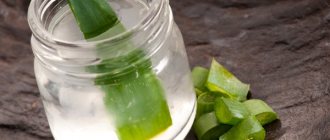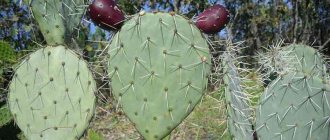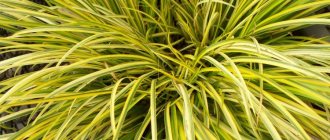Botanical description of the Crassula
Various representatives differ in external characteristics. Almost all plants belong to the category of perennials with monocarpic shoots, the height of which, depending on the species, can vary from a few centimeters to three meters. Foliage is opposite. Many species have simple, entire leaves, collected in a basal rosette.
Small flowers can be white, yellow, reddish or bluish in color. It is important to note that the foliage contains a fairly high amount of arsenic, so using the plant for food purposes is quite dangerous for human health and life.
What are the benefits of sprouted amaranth seeds?
Amaranth sprouts bring benefits to the whole body. It is a valuable source of energy. Eating sprouted seeds at night is harmful - there is a high probability of overexcitation and insomnia. Taken for medicinal purposes regularly or in courses of 2 months with a break of 6 months for prevention. The benefit is manifested in antitumor properties. Substances in acorn sprouts harm cancer cells, inhibiting their reproduction.
Germinate the seeds in a glass container ¾ covered with water in a bright place, without direct sunlight. The benefits of sprouted amaranth for the body are noticeable both from fresh sprouts and when stored in the refrigerator.
Crassula: beneficial and medicinal properties
The medicinal properties and beneficial effects of Crassula on the human body are due to the chemical composition of this plant. The healing properties of indoor culture are manifested in the presence of the following pathologies and diseases:
- plant raw materials in the form of a paste of leaves is an effective external remedy used in the healing of mechanical damage to the skin, and also helps well in getting rid of pimples and acne;
- compresses made from crushed leaves are also very helpful in treating bruises or severe sprains;
- one of the popular names for the money tree is “callus,” so the benefits of indoor crassula in removing old calluses are invaluable;
- to remove a callus from a leaf, you need to remove the thin outer skin and apply it to the callus overnight;
- juice from the leaves of Crassula is useful for many diseases and allows you to relieve attacks of pain due to arthritis and arthrosis, as well as gout;
Chemical composition and calorie content of amaranth
In the amaranth plant, the benefits and harms are due to a unique combination of nutrients, vitamins and minerals. Thanks to chemical research, the composition of ashiritsa was determined:
- vitamins A (146 mcg), C (43.3 mg), B1 (0.03 mg), B2 (0.16 mg), B5 (0.06 mg), B6 (0.19 mg), B9 (85 µg), PP (0.66 mg), K (1140 µg);
- trace elements iron (2.32 mg), zinc (0.9 mg), selenium (0.9 mg), manganese (0.89 mg), copper (0.16 mg);
- macroelements calcium (215 mg), phosphorus (50 mg), magnesium (55 mg), potassium (611 mg), sodium (20 mg);
- amaranthine (water-soluble antioxidant);
- polyphenols and flavonoids (16%);
- amino acids (15%), including lysine, which is useful for the body in the production of hormones, enzymes, anti-inflammatory antibodies, in the functioning of the cardiovascular system and tryptophan, which affects metabolic processes;
- protein (21%);
- dietary fiber (34%);
- vegetable oils, including polyunsaturated fatty acids Omega-3 and Omega-6 (9%);
- squalene (11%) – stops the proliferation of cancer cells, has regenerating and immunostimulating properties;
- pectin;
- starch (60%);
- lipids (85%);
- phytosterols;
- betacyanin pigments.
Both seeds and leaves are useful.
Nutritional value of 100 g of shiritsa:
- proteins – 13.56 g;
- carbohydrates – 68.55 g;
- fats – 7.02 g;
- fiber – 6.7 g;
- ash – 2.88 g;
- calorie content – 371 kcal.
Attention!
Amaranth seeds and leaves contain approximately 30% more protein than oats, rice. According to this indicator, it is 2 times healthier than soy or wheat. This plant is recommended for daily consumption by the World Health Organization.
Medicinal properties of Crassula (video)
- Juice-based products help relieve swelling from bites of blood-sucking and stinging insects;
- A characteristic feature of Crassula juice is the presence of antiviral activity, which makes it possible to use the product for the treatment of sore throat, as well as dental diseases;
- lubrication with juice helps in the treatment of inflammation, and also effectively relieves colds from the runny nose and herpes;
- polyposis of the nasal mucosa is also quite easily treated by douching with water at room temperature with the addition of juice;
- Crassula juice has pronounced anti-inflammatory properties, which allows the use of medicines based on it in the treatment of hemorrhoids and varicose veins.
It is not difficult to independently prepare a healing external remedy for the treatment of a number of diseases - just follow the following technology:
- mix the juice from a couple of Crassula leaves with a small amount of liquid petroleum jelly, then carefully soak cotton swabs in the mixture and tampon the inflamed hemorrhoids twice a day;
- Treatment of varicose veins, muscle pain of a rheumatic nature and inflammation of the ternary or facial nerve is carried out using compresses.
It is best to moisten compresses and perform rubbing with a specially prepared tincture. For production, crushed raw materials are filled with 40% alcohol and infused for a month in a dark place at room temperature.
What to do to prevent juice from harming your health?
To prevent the juice from causing harm to the body, precautions should be taken :
- Consult your doctor.
- Check for any allergic reaction to the drug.
This will help avoid unpleasant consequences. To do this, apply a small amount of the product to the bend of the elbow joint and wait a while. If slight redness or itching appears at the application site, you will have to stop using the medicine. - Treatment begins with small doses. In this case, the plant juice is diluted with a small amount of warm boiled water, gradually increasing its concentration.
- The daily dose should not exceed 3 - 5 leaves per glass of water or 3 tablespoons of juice.
- If signs of poisoning appear, you should stop taking the drug and contact a medical facility for qualified assistance.
When kept at home, the pot with the plant should be placed out of the reach of children and animals.
The use of Crassula juice should be judicious. With proper precautions, dosage and advice from experienced professionals, it will be a valuable source of home remedy.
Contraindications for use
Long-term studies of the chemical composition and properties of Crassula have not been carried out, but there is reason to assume that the indoor ornamental plant is characterized by the content of a certain amount of arsenic compounds. Modern official medicine takes into account the extreme toxicity of arsenic , but arsenic was once used in folk medicine as one of the constituents of drugs used in the treatment of intermittent fever and diseases of the nervous system.
Currently, it is the presence of arsenic that is a contraindication and the reason for limiting the internal use of plant materials produced from Crasula. Arsenides, or arsenic compounds, accumulate in the body and cause serious harm to health. People who self-medicate and use money tree-based medicines uncontrollably are especially at risk.
Is amaranth good for weight loss?
A number of studies have confirmed the benefits of consuming amaranth in the fight against excess weight. Ashiritsa derivatives are used as components of various diets:
- oil for salad dressing;
- bran is useful for accelerating metabolism;
- baking flour does not harm your figure;
- meal or cake is useful as a source of protein;
- tea and agaric flakes.
Amaranth goes well with other products and complements any dish with a sufficient amount of nutrients, since the main thing in any diet is a balanced diet.
The benefits and harms of the money tree
The magical properties of the tree crassula, bear's ear, crassula, cotyledon or money tree are well known in our country, so the ornamental plant is very popular among domestic flower growers. According to the ancient eastern teachings of Feng Shui, the indoor fat plant is the strongest talisman that activates the flow of wealth into the house. Esotericists regard this decorative crop as a powerful money magnet , and the famous soothsayer Vanga spoke about the beneficial effect of the fat plant on the energy of the house.
Even the appearance of the leaves of this ornamental plant can symbolize cash flows, so if the foliage on the crassula begins to dry out, shreds or falls off, then you can count on a sharp decrease in income, and the thicker the stem part and leaves, the higher the financial well-being of the owner of the indoor flower.
In order for a decorative crop to start “working” and attract money to your home, you need to follow simple rules:
- a flower pot for growing indoor Crassula should be red-brown or greenish-yellow;
- you need to prepare several coins of the same denomination and fill them in before planting;
- The plant should be planted exclusively on the waxing Moon.
You can also decorate the branches and stem part of an ornamental plant with red or golden ribbons, yellow coins, which will increase the magical properties of the ornamental plant.
What does amaranth look like and where does it grow?
Amaranth or amaranth, velvet, cockscomb is a herbaceous plant. It is distinguished by a branched stem about 1 m long. It can be annual or perennial. The leaves are oblong, pointed, green, less often red. It blooms with purple-red panicles, 0.2 m to 0.5 m long. At the end of August, seeds with a dense skin ripen in small fruit-boxes.
Shishritsa grows in warm temperate climates. Her homeland is South America. The amaranth family consists of more than 100 species of plants, divided into forage, vegetable and ornamental. About 20 species are found in Russia. Until the 18th century, amaranth was grown in Europe as an ornamental crop, and later its benefits were appreciated as livestock feed and for the production of cereals. Today it can be found in the wild in India and China.
How to care for a fat woman (video)
According to lovers of indoor ornamental plants, in shock conditions, for example, if a flower is not watered for a long time and then subjected to sufficiently abundant irrigation measures, the money tree blooms. The flowering is not very attractive, but according to legend, it promises a lot of positive things in the life of a gardener. In order to have money at home, you need to grow the crassula yourself by picking a leaf and rooting it in nutritious soil. It is important to note that the larger the flower pot, the faster the money tree grows, and therefore, the higher the financial well-being of the owner of this extraordinary ornamental plant.
Benefits of amaranth bran
The seed skin contains much more useful substances than the kernels. And of all the bran of grain crops, amaranth is considered the best, since it simultaneously contains in large quantities:
- dietary fiber (97%);
- unsaturated fats;
- amino acids;
- vitamins B, PP and E;
- magnesium, calcium, potassium, iron, phosphorus and sodium.
Their benefits as a source of fiber are irreplaceable. Dietary fiber has the ability to bind and remove toxins from the gastrointestinal tract. Amaranth normalizes metabolic processes, reduces cholesterol levels, and removes excess weight. You can eat 40–50 g of bran per day without harm to the body.
Areas of application of amaranth
Amaranth looks impressive alone, in a group with other plants, along garden paths and in hanging pots.
Since different parts of amaranth are edible, there is a demand for it in the culinary field. Thus, baked goods are baked from amaranth flour, pasta is made, breakfast cereals and baby food are made. The seeds are used to make cereal (quinoa), which makes nutritious and healthy cereals. Vegetable varieties are used to prepare salads and soups. Greens are also added to meat and fish dishes and sauces.
Amaranth: incredible healing properties
This plant grows in many gardens around the world. Today, most people know it as a weed, but a couple of thousand years ago, amaranth was used as a remedy for sacred rituals and as a food with nutritional value greater than rice.
The most unique properties of this plant are the stimulation of tissue growth and repair, the ability to reduce inflammation, prevent chronic diseases, increase bone density, reduce blood pressure and strengthen blood vessels.
Also, amaranth preparations improve hair health and promote rapid weight loss.
What is amaranth
Amaranth is generally the name given to more than 60 different species of the Amaranthus plant. Other names for the crop are shcheritsa (shiritsa), velvet grass, aksamitnik, cockscombs.
Externally, it is a tall plant with wide green leaves. The flower has a bright purple, red or golden yellow color.
Although many varieties of amaranth are considered weeds, some of its varieties are cultivated as leaf vegetables and grain plants.
In addition, lizard is used as a raw material for the production of essential oils.
To obtain edible seeds, only three varieties of the plant are usually grown - amaranth cruenus, amaranth hypochondriacus, amaranth caudatus.
From a dietary point of view, the leaves and seeds of amaranth are most important for humans. It doesn’t matter in what form ashiritsa appears on tables - in the form of grain, flour or tops - it is equally useful. However, the root also contains many nutrients. Despite the large amount of antioxidants and phytosterols it contains, amaranth is still a plant that many have not heard of.
The name of this plant comes from the Greek word, which means “unfading.” And it suits the plant perfectly, which continues to live even after many years of total bans and extermination.
Amaranth in ancient cultures
Amaranth belongs to the so-called pseudo-cereals, since it looks like a grain, but in fact it is not one.
The history of using shiritsa is very long. A study of amaranth seeds showed that the plant has been growing on the planet for several thousand years. Grains were consumed as food by the ancient inhabitants of Mexico and Peru. It was one of the main food crops of the Aztecs.
It is believed that the “domestication” of amaranth occurred approximately 6-8 thousand years ago. In ancient times, the Aztecs brought amaranth annually as tribute to their emperor. And the amount of this grain was identical to the size of the corn tribute. In ancient cultures, amaranth was a staple of the diet due to its high concentration of protein, minerals and vitamins. To this day, the countries of Central America have preserved the tradition of growing amaranth as a food product.
The Aztecs not only grew and ate amaranth, they used these grains in religious rituals. The ancients created the figure of a deity from shiritsa and honey. After worship, the idol was broken into pieces and distributed to the participants of the ceremony as food.
In Rus', shchiritsa was considered a plant that bestows immortality, and the ancient Slavs used it to make bread. Believing in the protective powers of amaranth, the Russians took it with them on hikes and gave it to their children. The guardians of culture in Rus' - the elders - mainly ate amaranth. And they lived, remaining active, for up to 300 (!) years, according to various sources.
Shchiritsa today
Amaranth seeds have spread throughout the world. Their leaves and grains have become important food sources in regions of Africa, Nepal, and India. Today this plant can be found in China, Russia, Thailand, Nigeria, Mexico, and some regions of South America.
Of the several hundred known species of shiritsa, almost 20 grow in Russia. As a habitat, amaranth prefers high mountain areas, but if necessary, it easily adapts to any conditions. It grows well in moist, loose soil with good drainage at almost any altitude, in temperate latitudes. But it develops equally well in low-moisture regions, which makes it a particularly valuable crop in Africa.
Benefit for health
Shchiritsa is an excellent source of calcium, iron, magnesium, phosphorus and potassium. It is also the only grain that contains vitamin C. All this indicates the need to include acorn seeds in the diet.
Source of proteins
Undoubtedly, the most important aspect that makes amaranth such a popular food of ancient peoples is its high concentration of protein; in some varieties, amaranth seeds contain as much protein as chicken! This means that by consuming the plant, the body can not only meet immediate protein needs, but also take care of creating protein reserves.
Depending on the phase of development, the green mass of amaranth contains: 18-25% dry matter, 3.0-3.9% crude protein, 0.5-0.65% fat, 3.9-5.45% fiber, 0 .46-0.535% calcium, 0.004-0.055% phosphorus, 40 mg carotene. In terms of absolutely dry weight: crude protein 15.6-16.75%, fat - 2.4-2.8%, fiber - 16.-21.7%, calcium 2.1-2.6%, phosphorus 0.2-0.21%, carotene 160-200 mg.
For comparison, the green mass of corn in the phase of milky-waxy grain ripeness contains 7.5-8% protein, which is 2 times less than in amaranth.
The amino acid content in 1 kg of dry matter of the vegetative mass ranges from 81.5 g. up to 148.0 g., and amaranth protein is characterized by a high content of essential amino acids. 1 kg of dry matter of the vegetative mass contains 7.1-7.15 g of lysine, and 2.8 g of corn, i.e. 2.4 times less. In terms of amino acid balance, the protein of amaranth leaves is close to ideal for pigs. Therefore, for humans too! You can’t argue against Nature...
Amaranth is characterized positively as a fodder crop: low fiber content of 16-20%, concentration of water-soluble sugars 6.4-7.2%, and pectin 9.5-11.3% by dry weight.
Regular consumption of proteins contributes to the growth and development of cells and tissues, energy and proper metabolism. Approximately 13-18 percent of amaranth's chemical composition is protein, which significantly exceeds the level of this nutrient in other types of grain crops. Even agaric leaves contain a lot of protein. In addition, the protein from this plant is called complete because it contains lysine, an amino acid that is much less in other plant proteins.
The benefits of ashiritsa proteins were first studied in Peru in the 1980s. In the study, children were given amaranth in the form of cereals and flakes. It turned out that this plant can be consumed as a main component of children's diets in developing countries.
Another study was conducted in Guatemala in 1993. The results of this experiment were similar to those of the Peruvian one. Scientists have again concluded that amaranth protein is one of the most highly nutritious among all proteins of plant origin and is very close in chemical composition to animal proteins.
And not so long ago, molecular biologists from Mexico began to study bioactive peptides in amaranth proteins. And in 2008, they discovered the peptide lunasin in ashiritsa, which had previously been identified in soybeans. It is believed that lunasin is an anti-cancer substance, and also eliminates inflammation in chronic diseases (such as arthritis, gout and others), protects against diabetes, cardiac diseases, and stroke.
Down with “bad” cholesterol
Studies conducted over the past 14 years have proven the effectiveness of the grains of this plant in lowering cholesterol.
In 1993, American scientists discovered that regular use of amaranth oil reduces the level of “bad” cholesterol.
In 2003, scientists from Ontario, Canada found that acorns are an excellent source of phytosterols, which, when entering the human body, reduce cholesterol levels.
And in 2007, Russian researchers discovered the benefits of amaranth for people with cardiovascular diseases. It turned out that acorn groats have a positive effect on the condition of patients with coronary heart disease and hypertension. In them, amaranth reduces total cholesterol levels, regulates the concentration of triglycerides and “bad” cholesterol.
Gluten free
Gluten is the main protein in most grains. It is responsible for the elasticity of the dough, the texture of baked goods and plays the role of a leavening agent. But recently there are more and more people whose bodies, as a result of autoimmune diseases, are not able to digest this protein. In addition, the role of gluten as a mediator in the occurrence of many diseases has been proven, regardless of the so-called celiac disease!
In this case, ashiritsa copes well with the role of a substitute for gluten-containing grains, partly fulfilling the technological properties of gluten when baking bread.
Source of calcium
Shchiritsa leaves contain many useful micro- and macroelements. One of them is calcium. By the way, there are very few leafy vegetables containing such a high concentration of this element as amaranth. In amaranth leaves during the flowering of the plant, the calcium content increases to 2000 mg/% in terms of dry matter. Which is even slightly (25%) higher than the calcium content in poppy seeds - the record holder in this regard (1500-1700 mg%)! And 15 times more than in cottage cheese!
Therefore, acorn greens are considered an excellent medicine for the prevention of osteoporosis and a means for strengthening bone tissue. Shchiritsa prevents bone demineralization, which, in fact, prolongs the period of active life.
Benefits for digestion
There are a number of benefits that make ashiritsa a component that has a beneficial effect on the health of the digestive system. A high concentration of fiber improves the functioning of the gastrointestinal tract, has a beneficial effect on intestinal function, promoting the effective absorption of nutrients by the walls of the colon.
Against varicose veins
With age, varicose veins worry more and more people. This disease not only worsens the appearance, but is also a very dangerous disruption of the functioning of blood vessels.
Amaranth products contain flavonoids, in particular rutin, which prevents varicose veins by strengthening the walls of capillaries. In addition, ashiritsa contains a fairly high concentration of ascorbic acid, which is known to promote the production of collagen, a substance that restores and strengthens the walls of blood vessels.
Vision
The concentration of carotenoids and vitamin A contained in acorn leaves are important components for maintaining eye health. These components can slow down or completely stop the development of cataracts and restore visual acuity.
During pregnancy
Folic acid is especially important for the health of pregnant women. A deficiency of the substance can cause abnormal development of the fetus. If amaranth grains and leaves appear in the expectant mother's diet, there is no need to worry about a lack of folic acid.
Weight loss
Considering that protein consumption releases the so-called satiety hormone, which reduces appetite, amaranth is a faithful assistant to anyone who wants to lose weight.
On the one hand, the fiber contained in the plant reduces appetite, on the other hand, the high concentration of protein also works to dull the feeling of hunger. Together, this makes amaranth a suitable herb for weight loss.
Healthy hair
Ashiritsa contains the amino acid lysine, which the body is not able to produce on its own, but which is very necessary for humans. This substance promotes better calcium absorption and prevents premature baldness.
Juice from acorn leaves will protect against hair loss. It is used as a rinse after washing.
In addition, amaranth grains contain a component that prevents early graying of hair.
A storehouse of vitamins and minerals
Aksamitnik is an excellent source of many vitamins, including A, C, E, K and group B. They act on the body as antioxidants, increase tone, and regulate hormonal balance.
The minerals contained in the plant include calcium, magnesium, copper, zinc, potassium, and phosphorus. Working together, they maintain the health and strength of bones and muscles, and are also responsible for the adequate flow of most vital processes in the body.
According to recent studies, amaranth can also increase the functionality of the immune system.
Possible dangers of amaranth
Like other green leafy vegetables, amaranth leaves contain a certain amount of oxalates (salts and esters of oxalic acid), which can be equally beneficial and harmful to the body. In particular, this substance is undesirable for people with kidney or gallstones. For this reason, amaranth can aggravate the manifestations of the disease.
However, it should be borne in mind that consuming amaranth in the form of RAW leaves and grains does not pose this danger!
Allergy as a reaction to the consumption of amaranth is an extremely rare phenomenon. And even if it appears in exceptional cases, it usually goes away within a few minutes.
How to raise a lizard
As already noted, amaranth is an easily adaptable plant, so it can grow in almost any conditions.
But it is better to sow when the earth warms up and there is enough moisture in the soil. With proper sowing, weed control will become irrelevant - the ashes will “crush” unwanted neighbors.
To obtain early shoots, agarica can be sown not in spring, but in autumn - before the first frost.
Amaranth is sowed in rows (the distance between which is at least 45 cm), and the space between plants should not be less than 7-10 cm. Otherwise, you should not expect a big harvest.
Compost, humus, nitroaminophosphate, phosphates, potassium or nitrogen agents are used as fertilizer during sowing.
Shoots appear after 10 days. At the initial stage of germination, it is important to thin out the plants to the required planting density. The plants are fertilized the second time when they reach 20 cm. During growth, it is important to provide the required amount of moisture, then the agaric will grow quite quickly - up to 7 cm daily.
The appearance of a panicle on the acorn grass is a sign that it is time to harvest. This usually occurs 110 days after sowing. However, it is important to remember that the maturation of all panicles does not occur simultaneously. Therefore, the crop is harvested as the seeds ripen.
Clean the seeds by sifting through a sieve. After drying, they are ready for sowing again.
Dry grains are also suitable for cooking. The agaric crop can be pickled or frozen.
Amaranth as a medicine:
1. In case of intestinal dysfunction, hemorrhoids, heavy menstruation, inflammatory processes in the genitourinary system, a water infusion of amaranth is used.
2. To treat dysentery and jaundice, a decoction of the roots and seeds of the plant is used.
3. Amaranth juice will help against malignant tumors.
4. Burns, bedsores, scars, insect bites are treated with amaranth oil.
5. Inflammation of the mucous membranes of the mouth can be cured by rinsing with agaric acid (take 5 parts of water for 1 part juice). How to cook…
...infusion of roots:
- 15 g of crushed roots are poured into 200 ml of boiling water. Let it brew in a water bath for 30 minutes. Cool. Take a third of a glass three times a day before meals.
...leaf infusion:
- Pour 20 g of leaves into a glass of boiling water and leave in a water bath for about a quarter of an hour. Remove from steam and leave for another 45 minutes. Take 2-3 times a day before meals, a third of a glass.
...infusion of seeds:
- Grind panicles with seeds. Pour 1 tablespoon of inflorescences into approximately 200 ml of boiling water. Leave to steam for 20 minutes. When cool, strain. Take 1 teaspoon of infusion with 50 ml of water three times a day. This remedy is effective for enuresis.
...bath product:
- Pour 300-350 g of plant with two liters of boiling water. Boil for 15 minutes. Cool, strain. Add to a bath half filled with water.
Benefits of amaranth oil
Amaranth oil, produced from the seeds of the plant, is an extremely useful product. Thanks to its unique chemical composition, it is used to strengthen the immune system and fight cancer. It contains squalene.
Squalene - the medicine of the future
Entering the human body, squalene rejuvenates cells and also inhibits the growth and spread of malignant tumors. In addition, squalene is able to increase the strength of the body’s immune system several times, thereby ensuring its resistance to various diseases.
Until recently, squalene was extracted exclusively from the liver of deep-sea sharks, which made it one of the most scarce and expensive products. But the problem was not only its high cost, but also the fact that shark liver contains only 1-1.5% squalene.
Not long ago, squalene was discovered in the germs of amaranth seeds and these seeds have become a real alternative to the liver of a deep-sea shark. The cost of squalene has fallen, so for example, now 6 ml of squalene can be purchased for 20 US dollars, only it will be contained in 100 ml of amaranth oil.
Squalene is contained only in the germs of seeds and nowhere else, there is a lot of false information on the Internet about the supposed presence of squalene in amaranth foliage, this is not so, squalene is contained only in amaranth oil, it is also found in other vegetable oils, but its percentage is disproportionately small.
The oil content in amaranth seeds is approximately 7-9%, of which only 3% oil can be extracted by cold pressing. The squalene content in amaranth oil is approximately 25%. In amaranth oil, a safe concentration of squalene is specially left at 6%; if you increase the percentage of concentration, the oil will burn the skin and esophagus when taken orally.
The squalene content in amaranth oil can be checked in a simple way: let the oil sit in the refrigerator for about a month and you will see exfoliated squalene at the bottom of the bottle. For this reason, it is recommended that before using amaranth oil, shake the bottle a little so that the squalene is evenly mixed in the oil.
During the biochemical analysis of squalene, many other interesting properties were discovered. It turned out that squalene is a derivative of vitamin A and, during the synthesis of cholesterol, is converted into its biochemical analogue 7-dehydrocholesterol, which in sunlight becomes vitamin D, thereby providing radioprotective properties. In addition, vitamin A is absorbed much better when it is dissolved in squalene.
Squalene was discovered in the human sebaceous glands and caused a whole revolution in cosmetology. After all, being a natural component of human skin, it is able to be easily absorbed and penetrate into the body, while accelerating the absorption of substances dissolved in the cosmetic product.
In addition, it turned out that squalene in amaranth oil has unique wound-healing properties and easily copes with most skin diseases, including eczema, psoriasis, trophic ulcers and burns.
Vitamin E, Omega-6 polyunsaturated fatty acids, arginine, methionine, carotenoids - and this is not the whole list of amaranth oil components.
This product, with a nut-like taste, is effective for the treatment and prevention of:
- cancer;
- bedsores;
- gastrointestinal diseases (cirrhosis, fatty liver, colitis, enterocolitis, pancreatitis, gastroduodenitis, cholecystitis, hepatitis, gastritis, stomach ulcers);
- diseases of the cardiovascular system (heart attack, stroke, atherosclerosis, angina pectoris, coronary heart disease, myocarditis, pericarditis, hypertension and others);
- diabetes mellitus;
- obesity;
- psoriasis, eczema, mycosis;
- anemia;
- diseases of the throat and oral cavity (tonsillitis, stomatitis, periodontitis);
- disorders of the nervous system;
- immune system dysfunction;
- muscle dystrophy;
- bone diseases (arthritis, arthrosis, osteoporosis, polyarthritis, weakened bones);
- ophthalmological disorders (night blindness, conjunctivitis, diabetic retinopathy and other eye diseases);
- infertility in men;
- erectile dysfunction;
- cervical erosion;
- fibroids.
But to prevent treatment with amaranth oil from causing harm, it is important not to overuse the product. People with pancreatitis, cholecystitis, stones in the urinary system or gall bladder should be especially careful, since an incorrectly chosen dosage can (while treating the illness!) aggravate the course of the disease.
Before starting a course of taking amaranth oil, it is important to consult a doctor.
During the consumption of this product (in the first few days), dizziness and nausea are possible. If the symptoms do not go away, it is better to avoid agaric oil.
Buy amaranth seeds https://zdrav-obraz.ru/products/amarant-zheltyi
How to properly prepare raw materials
The collection takes place in the last summer months, when the flowering period ends, since this natural product must be allowed to ripen. However, there are varieties that can be prepared in winter. Here are a few ways to preserve the beneficial properties of this amazing herb:
- Amaranth grains must be removed from the panicles, after which all parts are used - flowers and stems can be frozen, dried or fermented.
- Drying is carried out as follows: the plant is cut into large pieces, laid out in one layer on paper and placed in a cool and dark place. The raw materials are mixed from time to time.
- The second option is that the leaves are collected from the stem, bundles (bundles) are formed from them, which are hung and dried. Once the herb begins to crumble when rubbed, it can be removed and used as a natural cure for a variety of ailments or added to food.
- Another possible storage method is freezing. In this case, amaranth bouquets, washed and dried, are placed in bags and sent to the freezer. The shelf life of such preparations is no more than a year.
- The last method we will talk about is pickling. The first option involves making a brine with the addition of salt and sugar, the second is extremely simple - you just need to sprinkle the leaves collected in a bunch with salt and place them in a container.
The best way to start getting acquainted with amaranth is to try products made from this valuable raw material. There are a great variety of them - a variety of breakfasts, breads, bran, gluten-free pasta, and other sweets that will not add new kilograms, but will make your figure slim and beautiful. It is better to start the transition to proper nutrition by including foods that do not contain sugar and are rich in vitamins, minerals, and amino acids.
In this article we talked about the amaranth plant, its use in treatment and consumption, attaching a photo of the cereal crop, which remains one of the most useful and valuable. Eat right - choose foods that will become a good basis for a healthy and balanced diet, will help cleanse your body of waste and toxins and improve your health.
Author: Di&Di Corporation
Benefits of Crassula juice
All the healing substances of the plant are found in maximum concentration in its juice.
To maximize the benefits of procedures based on a beneficial plant, you must use freshly squeezed juice.
To squeeze it out, you need to separate the top film from the pulp, carefully grind the “money” leaves, and then strain the mixture through cheesecloth or a sieve.
Crassula juice:
- eliminates pain of various origins;
- disinfects;
- promotes skin regeneration;
- relieves swelling and inflammation;
- kills viruses and bacteria.
Recipes with amaranth
You can use amaranth flour, leaves, and oil to prepare various dishes.
There are many recipes, but I offer a few of the most popular ones.
Porridge
We will need:
- 2 cups amaranth seeds;
- 3 cups prunes;
- 3 tbsp. l. walnuts;
- 1 tbsp. l. butter;
- Salt and sugar - to taste.
Remove the pits from the washed prunes and finely chop them. Add water and cook over low heat for 5 minutes. Then add amaranth seeds, salt and sugar and cook until tender. Five minutes before the end of cooking, add chopped walnuts. Season the hot porridge with oil and serve.
Cutlets
To prepare them you will need:
- 200 g of young amaranth leaves;
- 2 eggs;
- Bulb;
- 2 cloves of garlic;
- 2 tbsp. l. grated cheese;
- 1 tbsp. l. wheat cereal;
- 2 tbsp. l. flour;
- Salt and pepper - to taste.
Boil the amaranth leaves for five minutes, chop and combine with all the ingredients. From the resulting mass we form cutlets, roll in breadcrumbs and fry on both sides.
Pancakes
We will need:
- ¼ cup each of amaranth seeds, corn and wheat flour;
- 2 cups cream;
- 0.5 tbsp. l. honey;
- 2 tbsp. l. vegetable oil;
- 1 egg;
- 0.5 tsp. soda quenched in vinegar.
Boil amaranth seeds for 15 minutes. Then mix all the ingredients and fry the pancakes in a frying pan.
Apples in amaranth
Take 8 apples and boil them in water. Then remove the peel and seeds and cut into strips. Add 1 tsp. honey, 1/4 cup of amaranth flour and the same amount of water, 100 g of butter, cinnamon to taste. Mix and place on a baking sheet, sprinkle with amaranth seeds and bake for 20 minutes at 180 degrees.
Tea
1 tbsp. l. Grind the panicle with seeds and pour a glass of boiling water. Leave for 20 minutes, then strain. You should drink ¼ glass 3 times a day, half an hour before meals and before bed.
Historical reference
The first information received about this unique natural healer came from an Armenian doctor who treated people in the 16th century. He used cereal culture to cleanse the stomach and intestines. His followers went even further - they prescribed a decoction of rhizomes and leaves, as well as a water infusion from:
- migraine;
- cough;
- tumors;
- constipation;
- colitis
Amaranth has long been used by doctors as a powerful hemostatic and diuretic agent. It was also prescribed for snake bites. The aerial part of the plant (stems, leaves, seeds) was actively used in the treatment of colds.
How is amaranth used in cosmetology?
Amaranth oil is beneficial for the beauty of the skin. Two drops are added without harm to skin and hair care products. In this concentration the plant has the following properties:
- rejuvenating and tightening the skin;
- protective from external irritants;
- hydration and nutrition;
- evens out facial tone;
- strengthens nails and hair.
Mask for the face
Masks are effective skin treatments. You can prepare them from amaranth with the following properties:
- Moisturizing mask for dry skin. Mix 1 tbsp. l. amaranth oil, honey, 1 egg yolk.
- Acne prevention. Apply 2 tbsp to your face for 30 minutes. l. amaranth oil, 2 tbsp. l. orange juice and ½ tsp. lemon juice.
- To prevent peeling of the skin, apply a mask of sour cream and butter in a ratio of 3 to 2 to the problem areas of the skin for 15 minutes.
- To tighten pores and deep clean. For 15 minutes, apply a mixture of 1 part clay and 2 parts oil to warm skin. After the procedure, wash with warm water.
Lotion
The simplest lotion is freshly squeezed amaranth juice. To preserve its properties, it is stored in a glass container in the refrigerator. Infusion-lotion is prepared from 1 tbsp. l. dry leaf or 2-3 tbsp. l. fresh leaves. The plant is poured with 250 ml of boiling water and left for 1–1.5 hours. Afterwards they filter. It is useful to wipe the skin of the face and neck with it twice a day.
Amaranth for hair beauty
In terms of its properties, a decoction of ashiritsa leaves is classified as an air conditioner. To strengthen hair, amaranth is used 1-2 times a week. To prepare the decoction, infuse 3 tbsp. l. dry leaves in 1 liter of boiling water for 24 hours. Before use, dilute with warm water in a ratio of 1 to 1.
Amaranth oil is useful as a remedy for hair loss. A few drops of oil are rubbed into the scalp at night for 2–6 months. Before the first use, you need to do a test on any area of the skin to make sure that there is no harm to the body - allergies.
What does it smell and taste like?
Amaranth greens are similar in flavor to spinach, but a little sweeter and a little juicier in texture. It has a stronger aroma.
Amaranth seeds have a sweet, nutty, slightly herbal taste. The smell is similar to the aroma of hazelnut. Amaranth is suitable for sweet and savory dishes. When cooked, the seeds become slightly gelatinous (similar to chia) but retain a firm, spherical shape.
Amaranth flour gives baked goods a mild malt flavor.
If amaranth or its flour is stored incorrectly or for too long, it acquires a bitter taste and an unpleasant odor.
Reviews from real people
What do people think about amaranth?
review on the forum
review on the forum review on the forum
review on the forum
review on the forum review on the forum
In fact, there are a lot of reviews, and mostly they are all positive.

